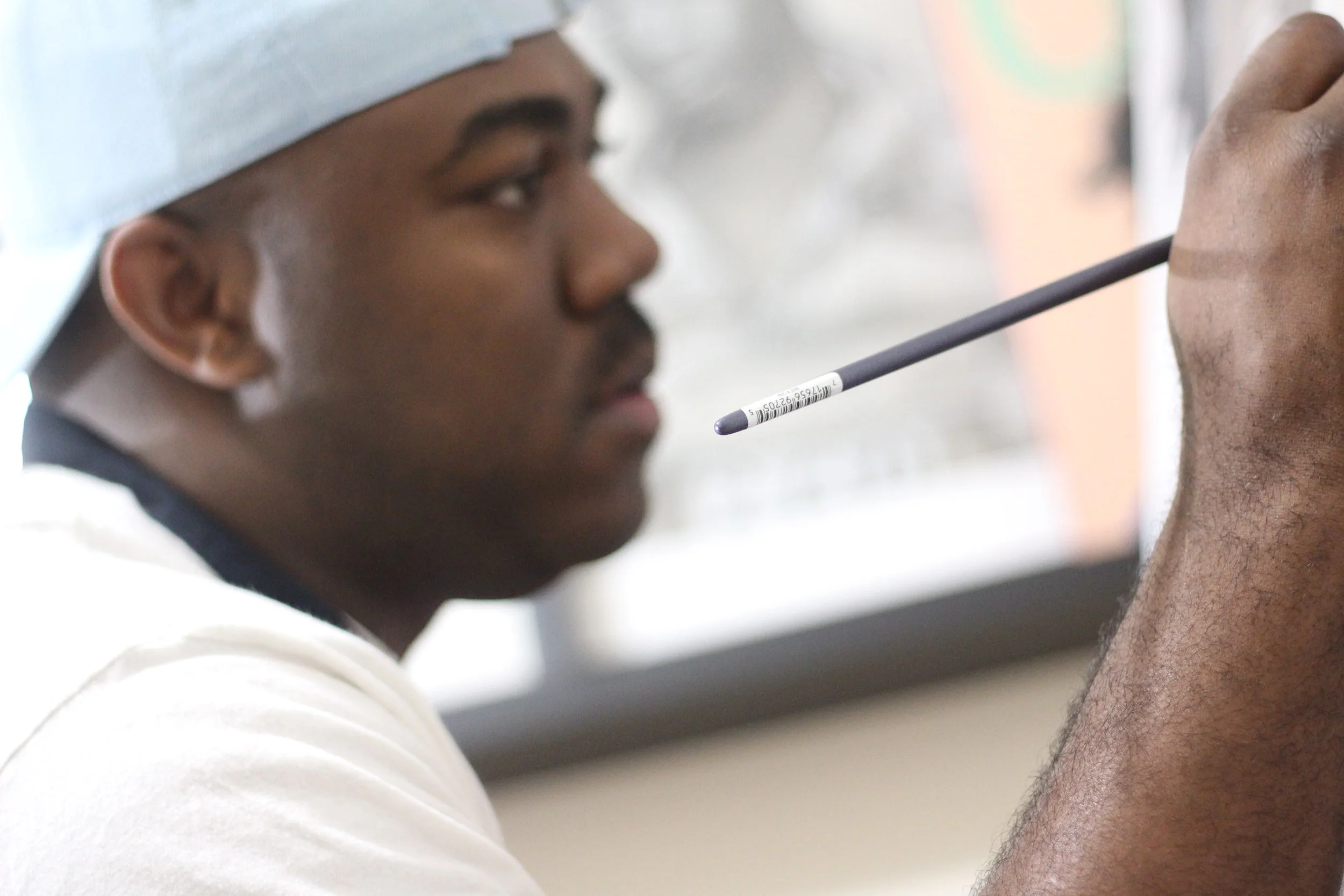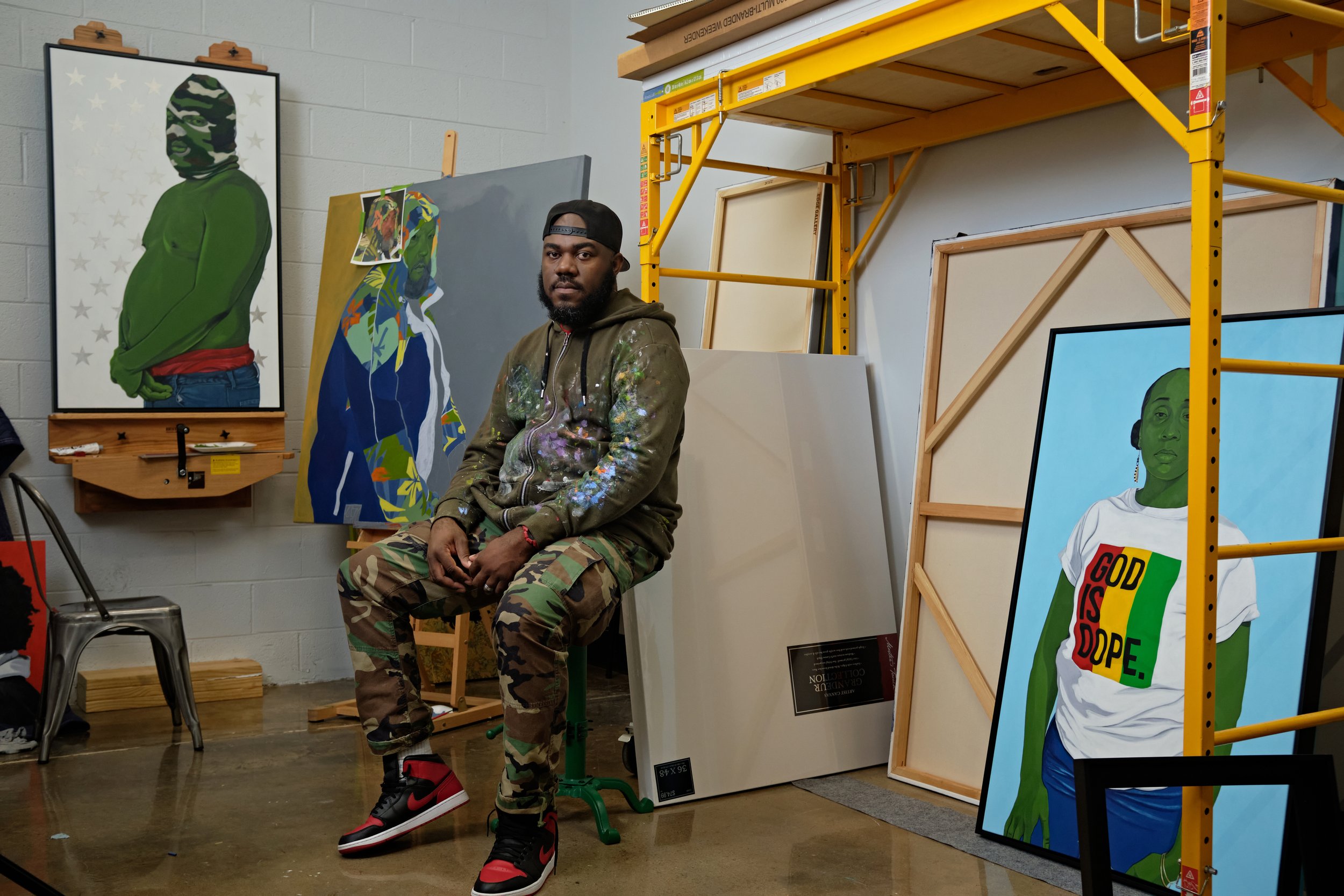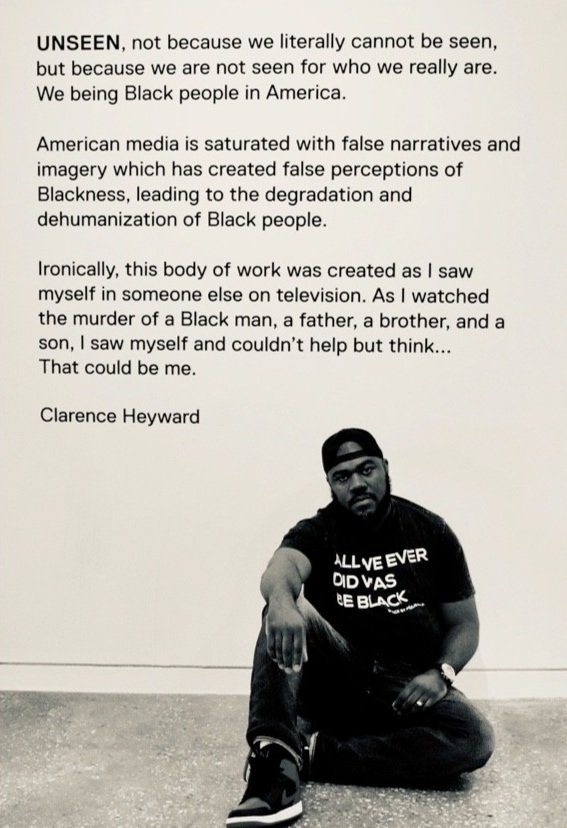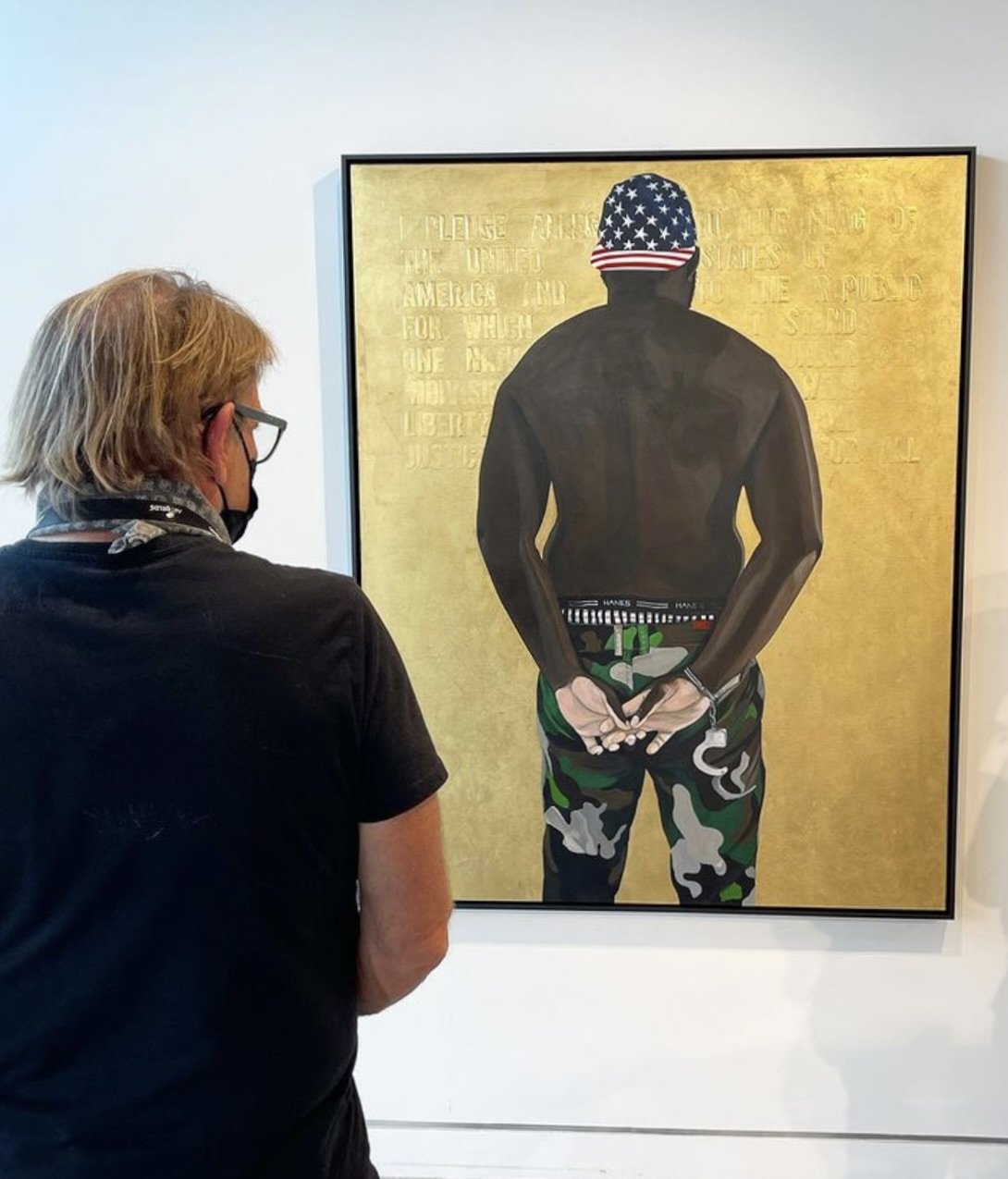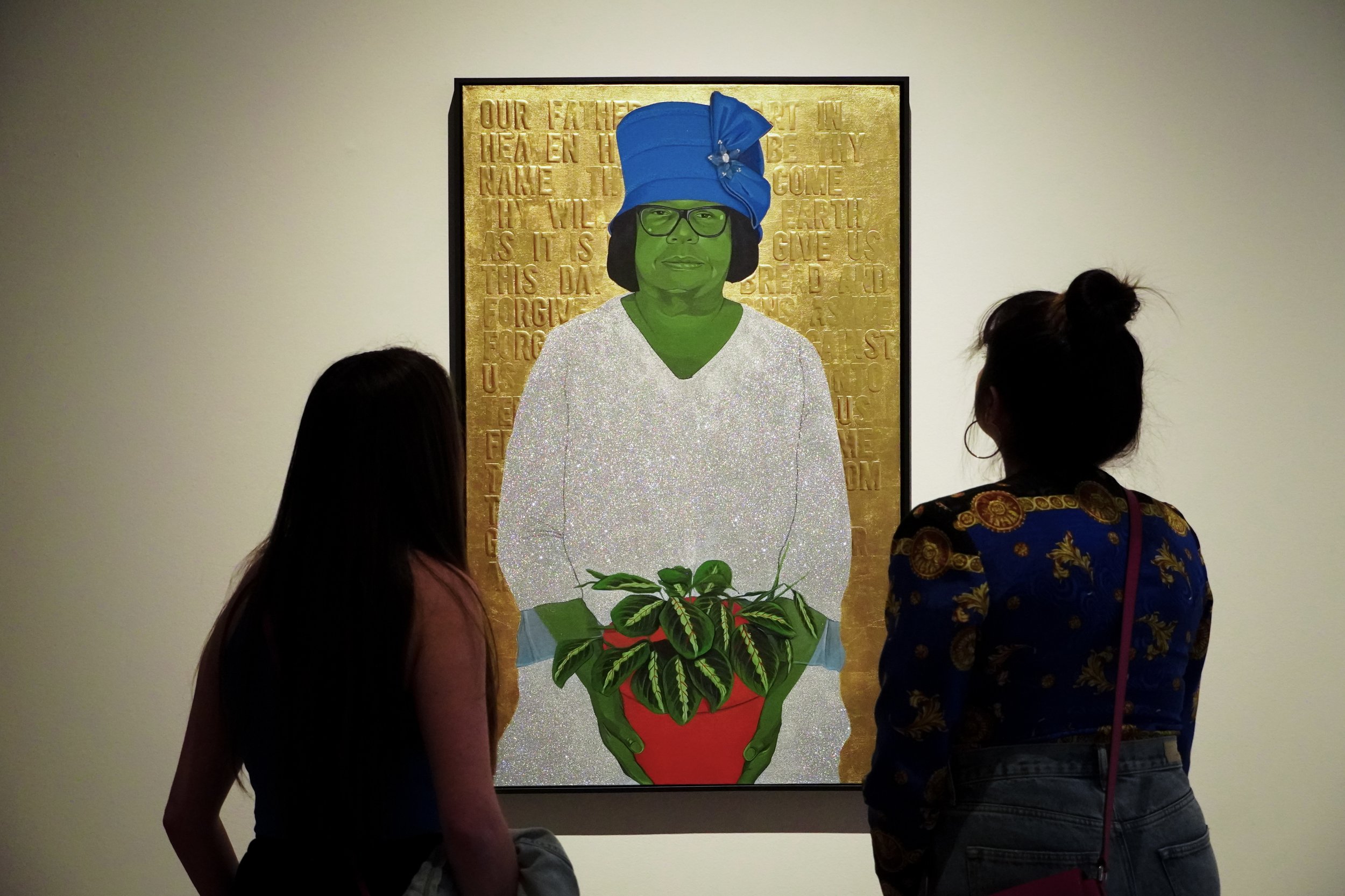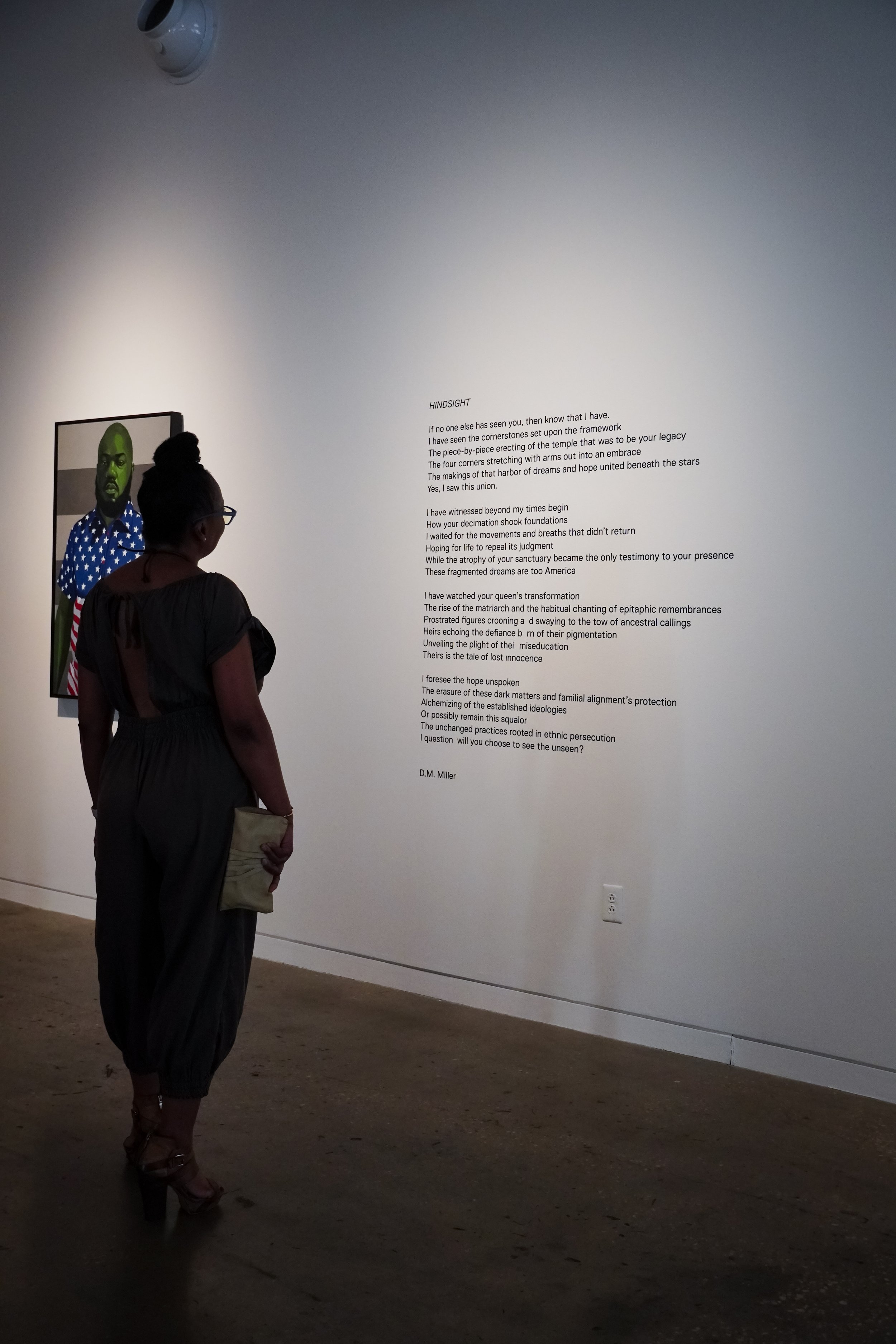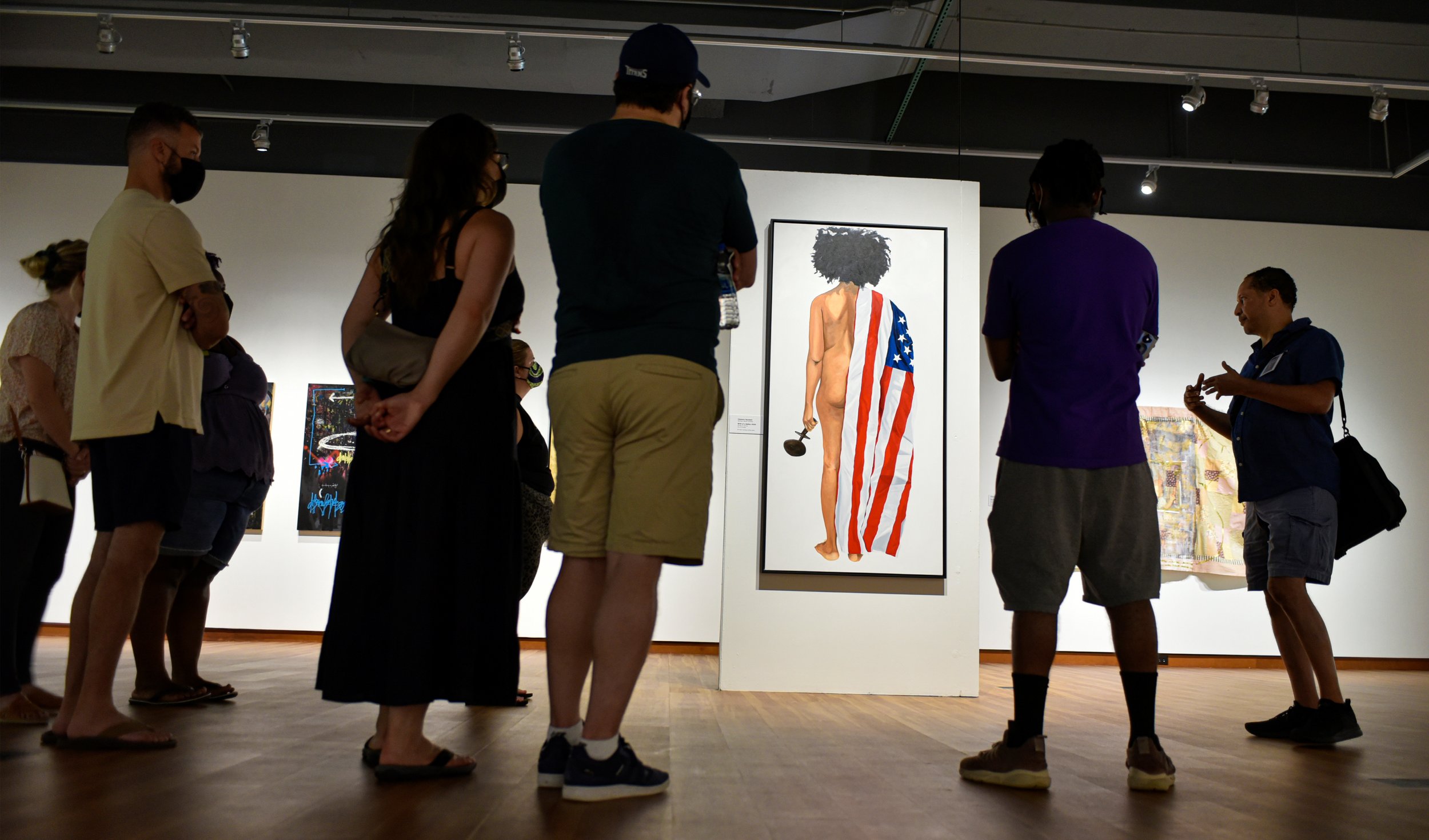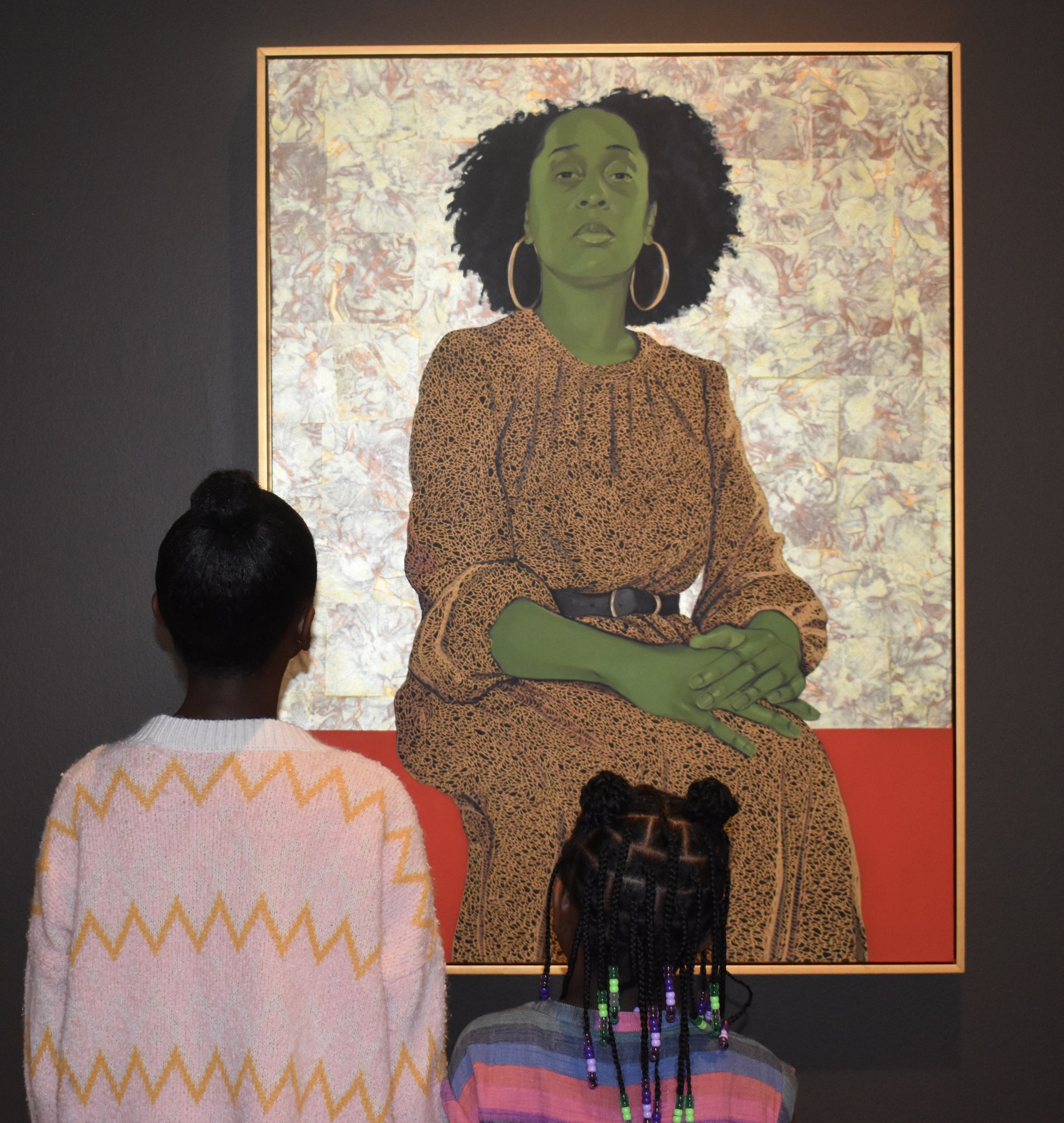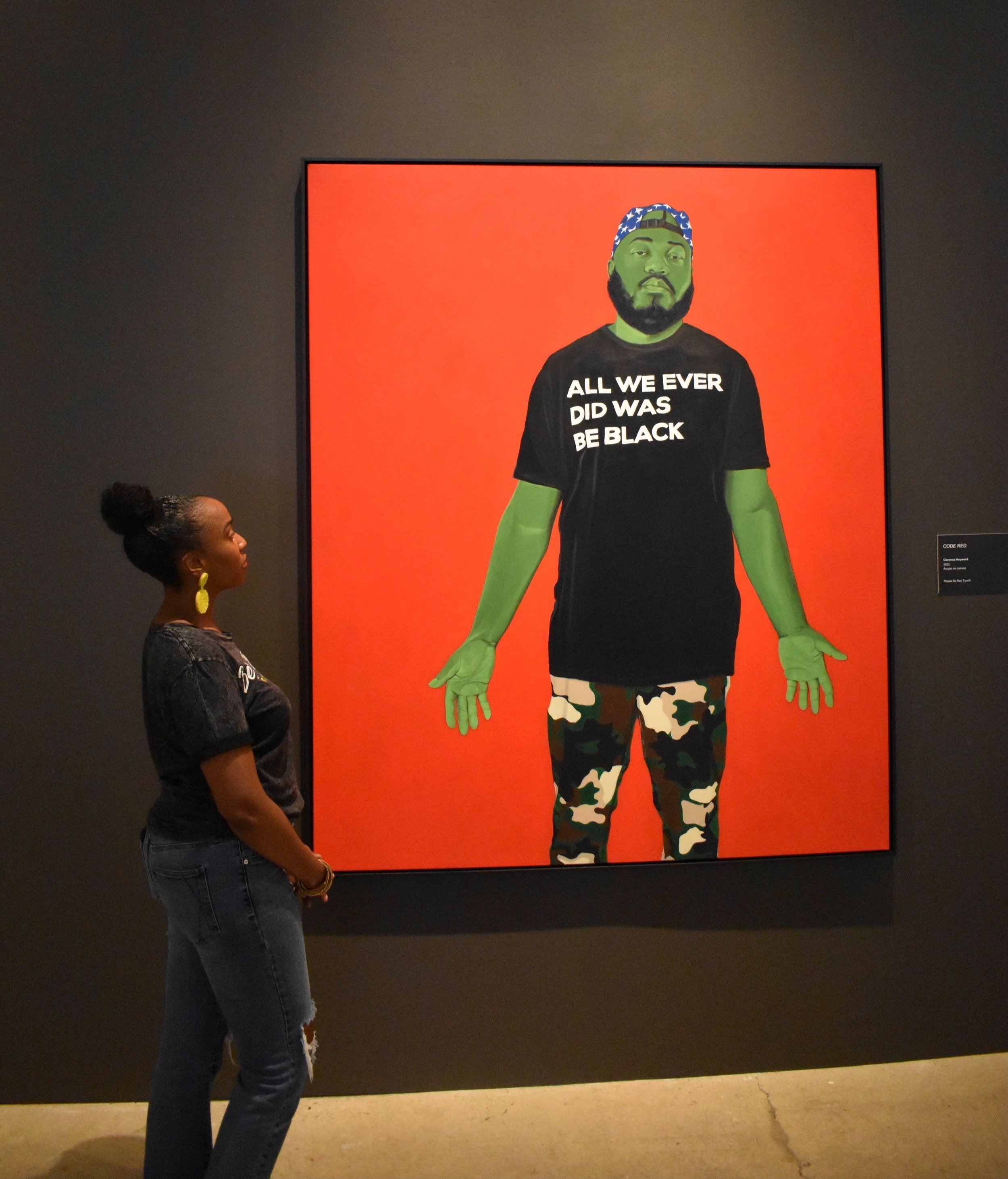.
BIOGRAPHY
Clarence Heyward is a painter and collagist whose work explores notions of the Black American experience, primarily focusing on how the use of media and historical documentation is used to shape perceptions of Black American culture. His work investigates cultural truths, challenges stereotypes, and examines identity.
He has exhibited his work in spaces nationally including the 21c Museum of Durham, the Harvey B. Gantt Center for Cultural Arts, the Wiregrass Museum, the Museum of Science and Industry Chicago, Art Miami Art Fair, the Dallas Art Fair, the Container-Santa Fe, the North Carolina Museum of Art, the Nasher Museum of Art at Duke University, and (CAM) the Contemporary Art Museum of Raleigh.
Heyward was the recipient of The Brightwork Fellowship residency at Anchorlight Raleigh in 2019-2020, the Emerging Artist in Residence at Artspace, Raleigh in 2021, the Ragdale (IL) artist fellowship in 2022, the 2022 Artist in Residence at NC State University and a 2023 Artist in Residence at Alfred University (NY). His work is in the collections of several notable private and public institutions including the North Carolina Museum of Art, the Nasher Museum of Art, the Ackland Art Museum, the Cameron Museum of Art and the Rubell Family Collection.
ARTIST STATEMENT
Like many artist, my practice has evolved through my life experience. My early years were spent referencing the imagery of my “art idols” with no real connection to concepts or “why”.
Those years were key in that they influenced the way I viewed myself, Black Americans, and our identities. This has led me to critically engage image making and ultimately be constantly conscious of narratives in regards to the contemporary Black American experience.
My art practice challenges stereotypes and myths, takes on social commentary, critiques perceptions, and creates dialogues all through the lens of the Black American male experience.
As a Black man, husband, and father living in America, my paintings draw from life experiences. It contains personal and collective narratives that position black bodies in the forefront and examines the reinterpretation of black existence in imagery addressing the notion of belonging, inclusion, our perceived presence and absence in America.
